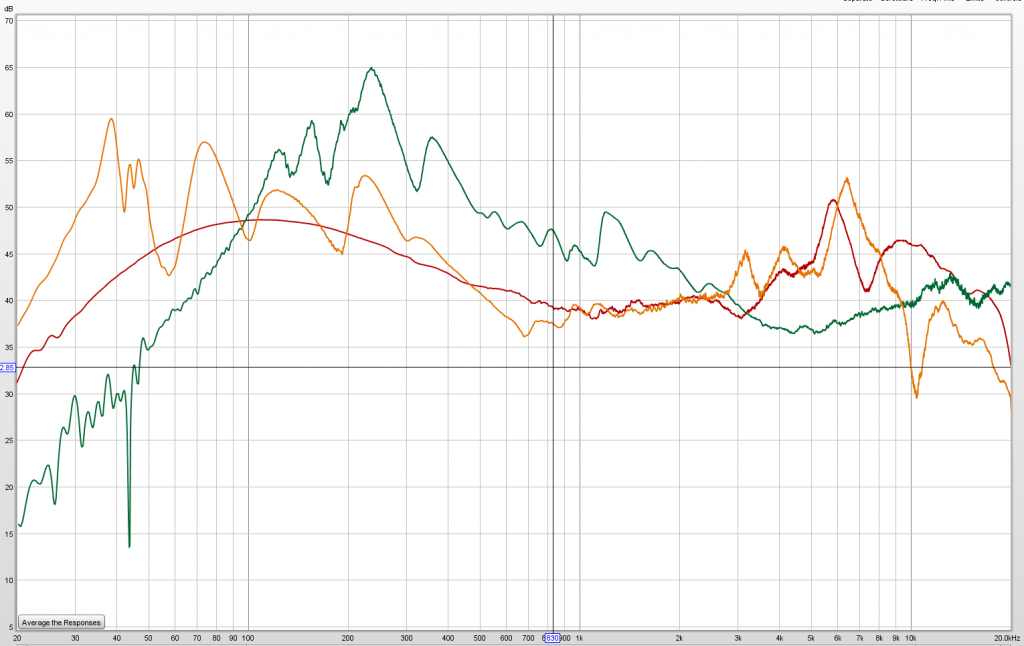I’ve been working on headphones for a few months, with blocks of time concentrated around the receipt of new prototypes and flights of inspiration.
I recently received my second set of prototypes. These are constructed by a manufacturer of flexible circuits, using copper for the traces and polyimide for the membrane. The total assembly thickness is about 110um, which is a lot thicker than the membranes you find in other planar magnetics.
You might very well be asking yourself why I’d put myself through this: if everyone else is using “nanometer-thick” membranes, why don’t you!?
Well.
Aside from enjoying a good challenge, there’s little point in making something open source if the design can only be made in one factory in the world. Then there’s the matter of actually making said tooling: I know just enough about the processes involved to know that it’s something I’d rather avoid.
So, to that end, here’s a little about how things are progressing towards a fully open set of planar magnetic headphones.
It’s all about that bass critical frequency
One of the ways to think about a wideband speaker driver is to look at it as a collection of simple harmonic oscillators. Basically, you could model your driver assembly as a collection of SHMs with various masses and stiffnesses. How they’re connected together is a function of the driver design, but one thing is constant: if you want response in any particular range of frequencies, you’re going to need at least one (preferably well-damped) oscillator with a critical frequency near that range.
Given this nugget of wisdom, one of the things I’ve been experimenting with is designing structures to give the driver a lower “lowest” critical frequency. I’d like a driver that has response down to 20Hz, so I’ve been playing with structures that have critical frequencies ranging from 10Hz to about 150Hz, two of which are featured in the picture below.

The structures around the edges are 3D printed springs that suspend the driver membrane and allow it to move about 2mm. They’re quite flexible.
How do they sound, I hear you ask? They’re okay. In specific circumstances, I hear hints of much potential in these designs. There is a really, really nice driver hiding in there somewhere. But in the meantime, the many sub-structures of the driver are introducing a lot of unwanted distortion by resonating and the lack of outer body is resulting in a driver that doesn’t have a critically damped impulse response.
For those of you who like graphs, here are some. The red line shows the response into my test setup from my DT880s. The green line shows the frequency response from the prototype in the foreground; the orange line is from the prototype in the background.

Here’s the impulse response from the orange prototype. It decays decently, but you can see evidence of ringing at several frequencies, suggesting there is more than one underdamped oscillator hiding in there, lying in wait to ruin your distortion (something that you can experience by listening to the right tunes).

Finally, I’m going to include a selection of what I listened to while testing these. I’m always interested in recommendations for tracks that will challenge the hardware, so sends those my way!
- Jacob Collier: Sleeping On My Dreams
- Sophie Milman: Fever
- Susannah McCorkle: The Waters of March
- Vaughan Williams: Lark Ascending (Hilary Hahn, LSO/Sir Colin Davis)
- Symphony No. 5, Mahler (Philadelphia Orchestra/James Levine)
- Violin Concerto, Sibelius (Leonidas Kavakos, Lahti Symphony Orchestra/Osmo Vanska)
- String Quartet #9 (American), Dvorak (Prager String Quartet)
- Cowboy Bepop OST: Rush
- Javier Busto: Ave Maria (Dale Warland Singers)
- Shenandoah (arr. Hewitt-Jones, VOCES8)
